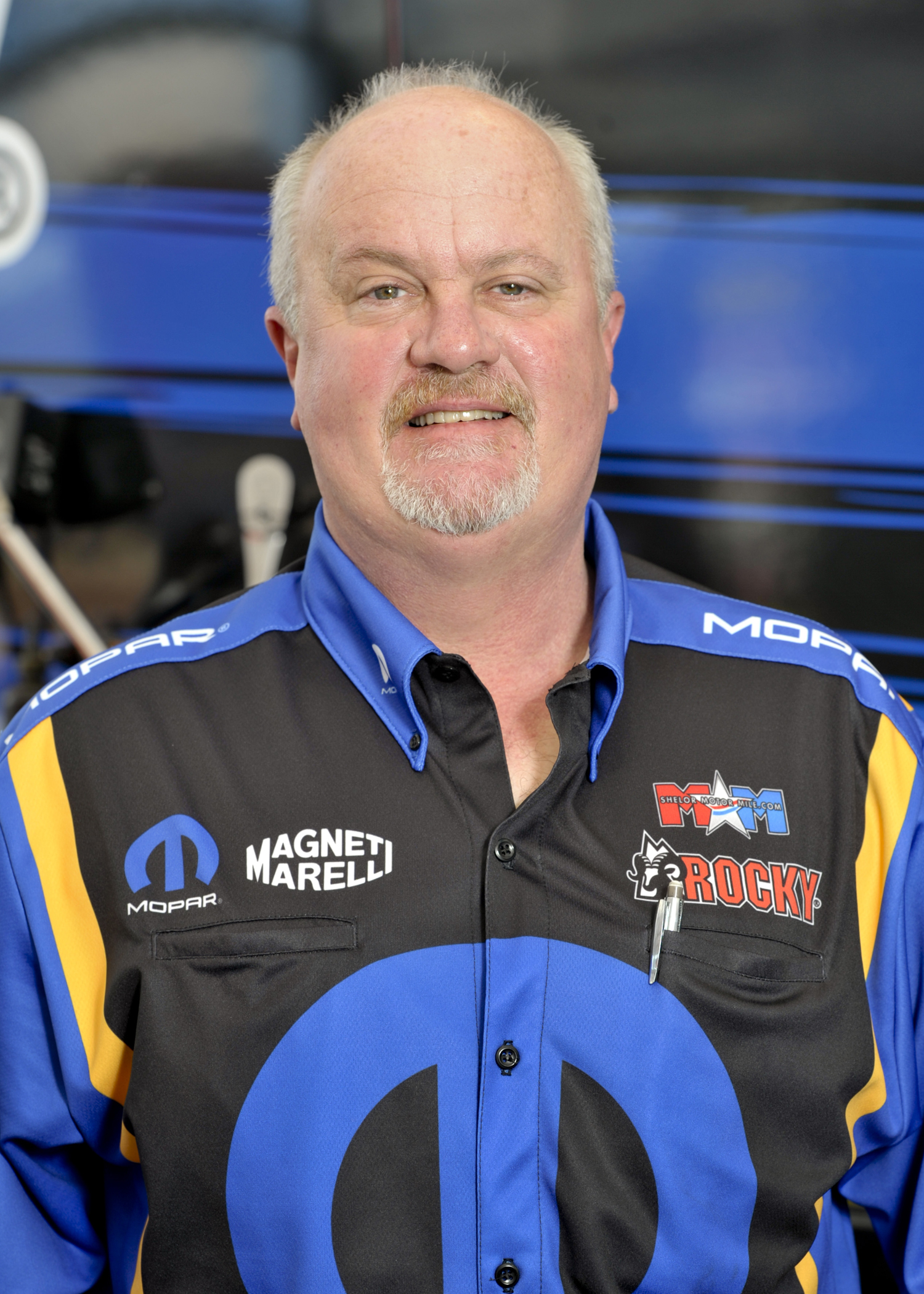VENABLES WEIGHS IN ON FUNNY CAR RULE CHANGE

In a memo issued to teams on July 12, NHRA's tech department said, "Effective immediately the minimum header angle will be 32 degrees. Additionally, there will be a maximum header pipe O.D. of 2.75 inches as well as the I.D. must remain constant beginning 8 inches below the header flange to the exit of the header (i.e. stepdown headers not permitted).”
Prior to qualifying July 23 at the Mile-High Nationals, world championship crew chief Dickie Venables weighed in on how the change impacted his team. Venables is the crew chief for the Don Schumacher Racing Funny Car driven by Matt Hagan.
“The rule change did not affect our headers at all,” Venables said. “Basically it didn’t impact us at all because we were able to run the same thing we’ve been running. That’s kind of the max, we can’t go anymore. We just happen to be right there where they set the rule, so we were fortunate not to have to change anything and it shouldn’t affect us at all. We’ve been running this quite a while. There may have been some people who had to change, but I think they (NHRA) just kind of went and took a poll and said OK guys, we’re OK with it, but you can’t go anymore.”
Venables then took a moment to explain how the header process works.
“When you first put them on you have to makes adjustments,” Venables said. “Some of these guys put them on and say ‘oh wow we can’t drive it, the front end is in the air.’ Well, you have to make adjustments. We’ve had to change the balance of our car. I moved fire bottles from the rear to the front to change the balance of the car. The headers are not something you can just bolt on and go try and I think that is what some of these people are doing. The headers are kind of getting a bad rap because guys are saying you can’t drive, but just like anything else on the car you have to make adjustments to make it work.”
Venables acknowledged the header rule change is just one of many implemented by NHRA to curb the innovative abilities of crew chiefs.

On May 20, 2016, Hagan had an historic run during qualifying at the Kansas Nationals at Heartland Park.
Hagan set both ends of the national record with a 3.862-second time at 335.57 mph.
That speed was the fastest of any Funny Car or Top Fuel dragster in NHRA history on the current 1,000-foot track, and the fastest a Funny Car has ever gone at the end of a quarter-mile.
NHRA has been competing at 1,000 feet for nitro Funny Cars and Top Fuel since the 2008 Mile-High Nationals in Denver.
According to Venables, after Topeka NHRA changed the rev limiters on nitro Funny Cars. Up until Topeka, the rev limiter was 8250 RPM and after Topeka it was reduced to 8150 RPM.
“It’s more and more that way,” said Vebables when asked of his crew chief job is now like following a template. “Our hands are tied. They (NHRA) makes it real clear that if you want to change the design of anything you have to run it by them first. I understand. They need to keep the speeds down. But as crew chief you have to adapt because like I’ve said over the years it has always been about finding an edge and be able to go out and win three or four races in a row because you worked harder to come up with something better. Now, the headers are the biggest gain we’ve seen probably in 15 years. A lot of people think that the headers have been the same over the years, but we have been playing with that for years.”
Venables also believes NHRA likes the present state of the Funny Car class.
“I think they are not unhappy where the cars are at,” Venables said. “What they want to see right now, they don’t like to the Funny Cars run a faster speed than the dragsters so I think they are going to continue work with the Funny Cars and the dragsters, whether they slow us down some more or maybe give the dragsters a little more timing, rev limiter, which they are probably not going to do, they’ll probably just slow us down more. I think they are happy with where it is at, they (NHRA) just don’t want to see it escalate.”





































